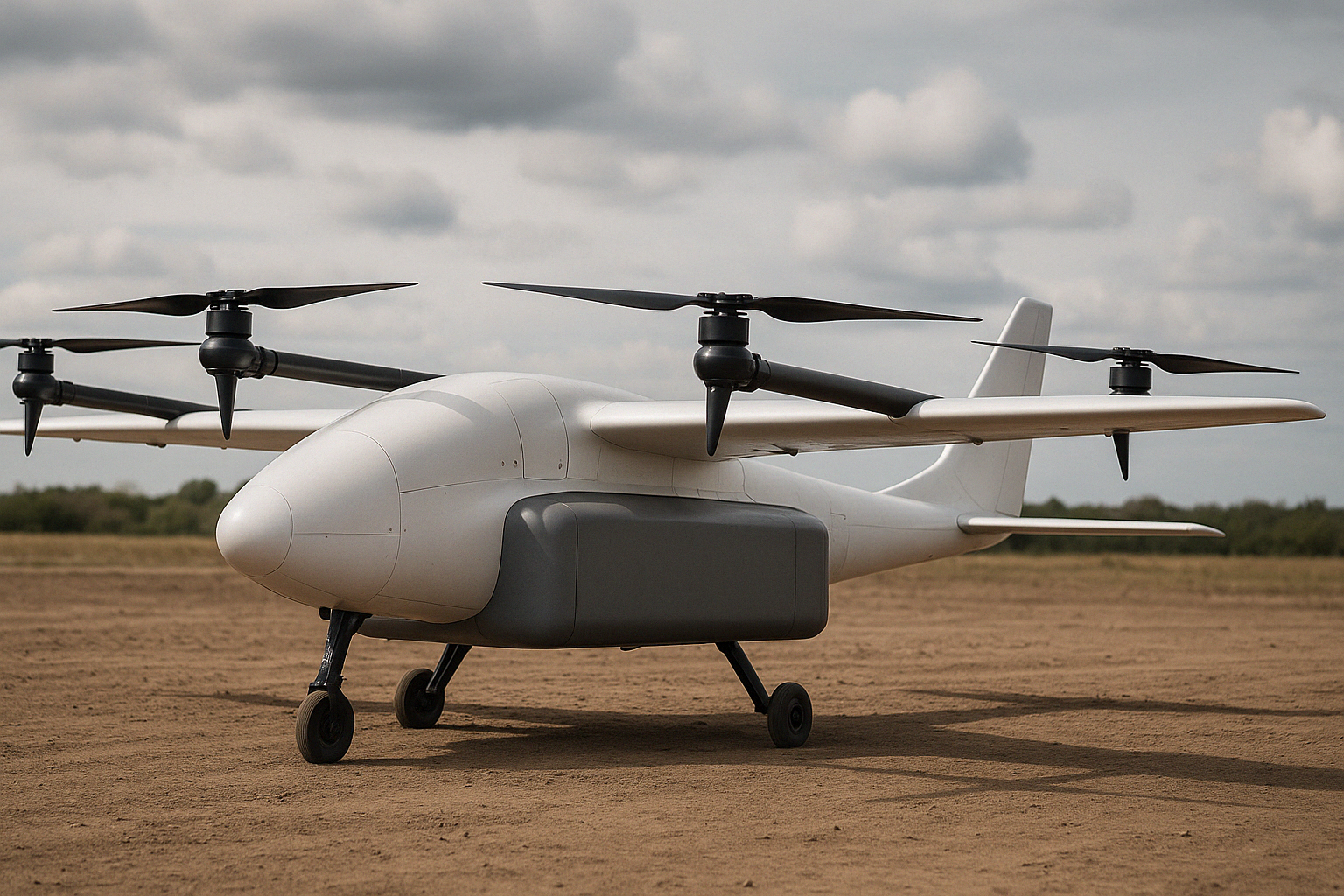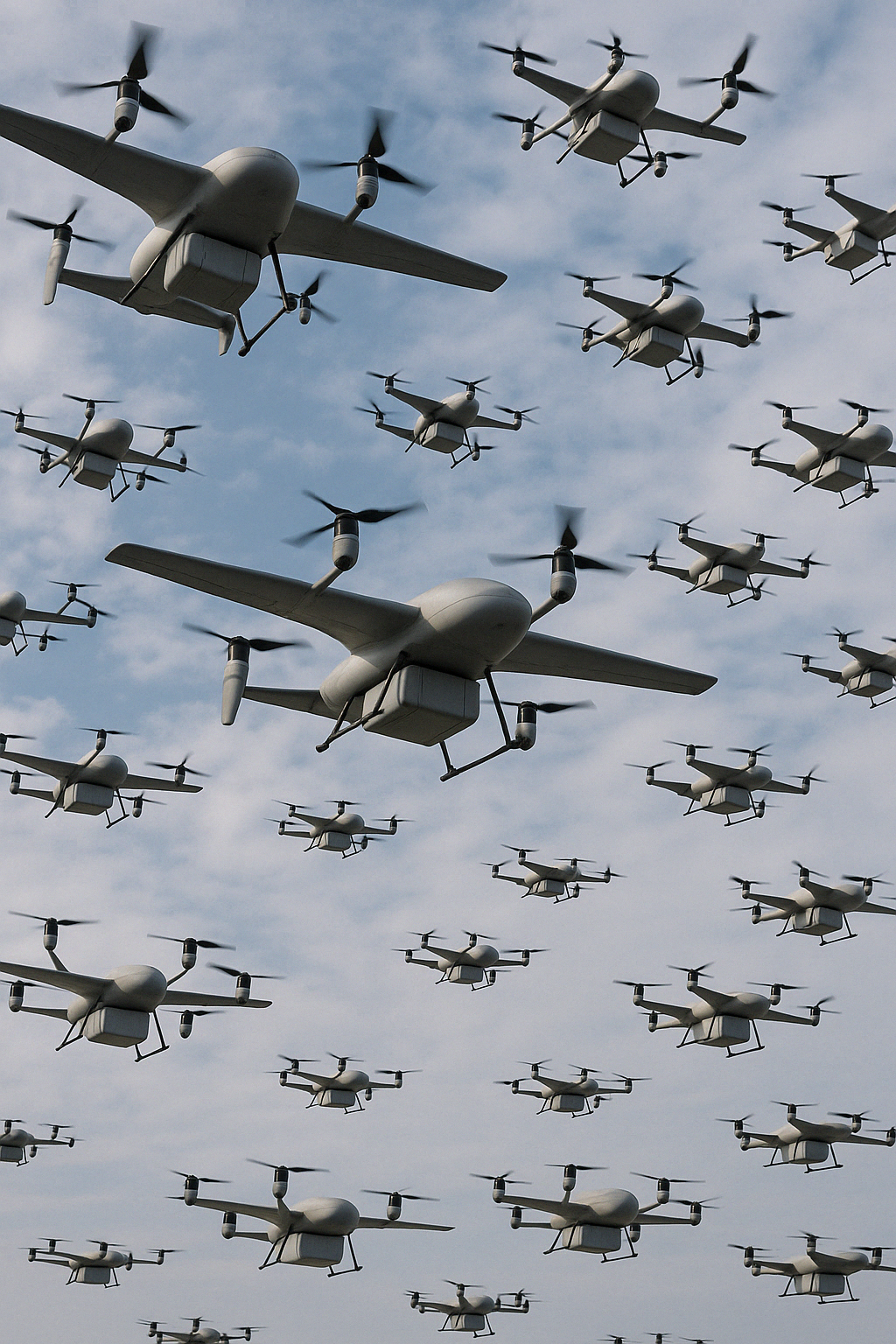Table of Contents
- Why Traditional Supply Chains Struggle in Remote Regions
- The Anatomy of an Autonomous Cargo Drone
- Core Technologies Enabling Fully Autonomous Flight
- ▶ Operational Models
- Case Study #1 – Medical Supply Corridors in Sub‑Saharan Africa
- Case Study #2 – Island Micro‑Logistics in the Pacific Rim
- Economic Impact Analysis
- Environmental Considerations
- Regulatory Landscape
- Safety, Security, and Counter‑Drone Measures
- Infrastructure Requirements
- Integrating Cargo Drones with IoT Platforms
- Challenges and Limitations
- Future Outlook: Beyond 2030

Autonomous Cargo Drones: Revolutionizing Remote Supply Chains and Last‑Mile Delivery
Published on: April 19, 2025
From isolated mountain villages to sparsely populated coastal islands, geography has always dictated the speed, cost, and reliability of logistics. While airplanes, ships, and trucks underpin the modern supply chain, they often under‑serve communities where runways, deep‑water ports, and paved highways are scarce or non‑existent. Autonomous cargo drones—unmanned aerial vehicles (UAVs) engineered for heavy payloads, long endurance, and fully automated operation—promise to bridge these gaps with unprecedented efficiency and agility.
Over the past decade, small multi‑rotor drones transformed aerial photography and inspection. Now, a new generation of larger, fixed‑wing and hybrid‑lift UAVs is ready to move beyond kilograms of camera gear to hundreds of kilograms of mission‑critical cargo. Backed by advances in batteries, hydrogen fuel cells, lightweight composites, and edge‑AI navigation, autonomous cargo drones stand poised to disrupt $9 trillion of global logistics spend—especially the $1 trillion last‑mile segment where up to 53% of total delivery cost is incurred.
Why Traditional Supply Chains Struggle in Remote Regions
- Terrain and Infrastructure: Mountain ranges, dense rainforests, archipelagos, and deserts inflate the CapEx of roads, bridges, and ports.
- Low Volume Demand: Small populations can’t justify frequent truck or boat runs, forcing bulk shipments that risk spoilage or stock‑outs.
- Weather Dependency: Monsoon seasons, winter ice roads, and fog limit the operational windows of traditional transport.
- Emergency Response: Natural disasters sever roads in hours, leaving aid trapped in distant warehouses.
- High Carbon Footprint: Diesel trucks on poor roads burn 30–50% more fuel per ton‑kilometer than on highways.
Autonomous cargo drones sidestep many of these hurdles by flying direct, requiring minimal ground infrastructure, and scaling elastically with demand.
The Anatomy of an Autonomous Cargo Drone
| Component | Function | State‑of‑the‑Art Innovations |
|---|---|---|
| Airframe | Provides lift, houses payload | Carbon‑fiber composites with blended‑wing bodies for <2 kg empty weight per kg payload |
| Propulsion | Generates thrust | Hybrid‑electric (battery + gasoline) giving 800 km range |
| Guidance & Navigation | Keeps the drone on course | Triple‑redundant GNSS + RTK + vision‑based SLAM |
| Autonomy Stack | Decision‑making brain | Onboard edge GPU running reinforcement‑learning flight policies |
| Payload Bay | Secures cargo | Modular, climate‑controlled pods with smart locks |
| Communications | Ground control & telemetry | C‑Band / LTE‑5G fallback, SATCOM for oceanic legs |
| Sense‑and‑Avoid | Collision prevention | Lidar + mm‑wave radar + ADS‑B in/out |
Core Technologies Enabling Fully Autonomous Flight
Edge AI and Reinforcement Learning
Modern autopilots leverage deep neural networks trained on millions of flight‑hours in simulation, enabling drones to predict aerodynamic disturbances and optimize energy consumption in real time.
BVLOS (Beyond Visual Line of Sight) Remote ID
Integration with ADS‑B and Remote ID beacons allows regulators and air‑traffic systems to track drones alongside crewed aircraft, unlocking legally compliant long‑distance routes.
Advanced Powertrains
- Solid‑state batteries with 400 Wh/kg energy densities extend pure‑electric range to 300 km carrying 100 kg.
- Hydrogen fuel cells offer 650 km range while emitting only water vapor.
- Hybrid turbogenerator‑battery systems push endurance past 1 000 km with rapid refuel.
Mesh Telemetry Networks
Drones relay telemetry through peer‑to‑peer links, maintaining command even in radio‑shadowed valleys.
Operational Models
Hub‑and‑Spoke
Cargo arrives by truck or cargo plane at a regional hub; drones fly spoke routes, delivering 50–200 kg payloads to village‑level drop‑zones.
Distributed Swarm
A fleet of smaller drones self‑organizes to pick up micro‑shipments from multiple origins and aggregate them at consolidation points, then dispatch larger UAVs for long‑haul hops.
On‑Demand Point‑to‑Point
Serves just‑in‑time delivery—e.g., critical machine parts to offshore wind turbines or urgent lab samples between hospitals—triggered via cloud APIs.
Case Study #1 – Medical Supply Corridors in Sub‑Saharan Africa
Problem: Rural clinics faced stock‑outs of blood bags and vaccines; road deliveries took 4–7 hours.
Solution: A 120‑km drone corridor linked a national blood bank to 21 clinics using VTOL drones carrying refrigerated pods.
Impact:
- Median delivery time cut to 42 minutes.
- Wastage of temperature‑sensitive vaccines fell 67%.
- Maternal mortality in postpartum hemorrhage cases dropped 29 % within two years.
Case Study #2 – Island Micro‑Logistics in the Pacific Rim
Context: A chain of 52 islands relied on weekly ferries. Storms canceled 15 % of crossings annually.
Deployment: Fixed‑wing UAVs with 80‑kg payload and amphibious landing gear. Vertiports retrofitted onto existing docks offered photovoltaic charging.
Results:
- Fresh produce spoilage decreased 40%.
- Inter‑island e‑commerce grew 3× within 18 months.
- Diesel ferry fuel consumption reduced by 12 % for the operator due to optimized load balancing.
Economic Impact Analysis
| Metric | Conventional Logistics | Autonomous Drone Network | % Change |
|---|---|---|---|
| Cost per kg (USD, 100 km) | 2.80 (4×4 truck) | 1.45 | –48% |
| Avg. Delivery Time | 6 h | 75 min | –79% |
| Stock‑out Rate (rural clinics) | 18% | 4% | –78% |
| Carbon Emissions (g CO₂ / kg‑km) | 620 | 120 (battery) / 260 (hybrid) | –80% / –58% |
Even after accounting for vertiport CapEx and battery depreciation, ROI horizons of 2.5–4 years are common, especially where poor roads inflate traditional costs.
Environmental Considerations
While battery‑electric drones drastically reduce tailpipe emissions, life‑cycle analysis (LCA) must include:
- Battery Mining & Recycling: Cobalt‑free LFP chemistries and circular‑economy recycling can lower cradle‑to‑grave footprint.
- Noise Pollution: Aero‑acoustic shielding and variable‑rpm rotors cut takeoff noise below 55 dB at 100 m—quieter than trucks.
- Wildlife Disturbance: Flight corridors mapped around migratory bird paths, with AI to trigger reroutes on flock detection.
Regulatory Landscape
- Performance‑Based Standards in the U.S. (FAA Part 135 exemptions) emphasize risk‑based approval rather than prescriptive weight limits.
- EASA HQ U‑Space corridors in the EU allow BVLOS ops under real‑time geofencing.
- Sandbox Initiatives in Singapore, Rwanda, and Brazil expedite certification for humanitarian routes.
Closing the gap between pioneering nations and lagging regulators remains critical; harmonized standards for detect‑and‑avoid, remote ID, and pilot licensing are underway via ICAO Drone Enable forums.
Safety, Security, and Counter‑Drone Measures
- Redundancy: Triple‑redundant flight computers and fail‑safe parachute recovery systems achieve 1 × 10⁻⁷ catastrophic failure probability per flight‑hour.
- Cybersecurity: AES‑256 encrypted command links with post‑quantum lattice signatures thwart spoofing.
- UTM Integration: Real‑time de‑confliction with manned traffic via cloud‑based Unmanned Traffic Management (UTM) platforms.
- Counter‑UAS: Radar‑guided RF jamming and precision nets safeguard vertiports from rogue drones.
Infrastructure Requirements
- Vertiports: Modular pads with automated battery swap robots; 400 m² footprint per pad supports 30 launches/hr.
- Charging & Fueling: 350 kW fast chargers or 700‑bar hydrogen skids, powered by on‑site solar‑plus‑storage for energy autonomy.
- Data Backbone: Edge servers process telemetry and maintenance logs locally, syncing to cloud analytics for predictive maintenance.
Integrating Cargo Drones with IoT Platforms
Modern ERPs now expose RESTful APIs to request drone pickups, update ETAs, and trigger smart‑contract payments on delivery confirmation. Sensorized payload bays feed temperature, shock, and humidity data into blockchain‑backed provenance ledgers—critical for pharma cold‑chains and high‑value electronics.
Challenges and Limitations
| Challenge | Mitigation Strategy |
|---|---|
| Limited Payload vs. Trucks | Hybrid‑lift airframes and ducted fans boost payload‑to‑weight ratios 15%. |
| Battery Supply Chain | Transition to sodium‑ion cells with abundant raw materials. |
| Weather Sensitivity | Onboard weather radar + ML predictive routing avoid convective storm cells. |
| Public Acceptance | Community engagement, noise abatement trials, transparent data‑privacy policies. |
| Regulatory Bottlenecks | Industry consortia lobbying for performance‑based global standards. |
Future Outlook: Beyond 2030
- 1000 kg Payload eVTOL Freighters will connect regional airports directly to city rooftops.
- Self‑Healing Swarm Networks will dynamically reassign drones when one grounds for maintenance.
- Space‑Based VHF Links via LEO satcom will extend coverage over oceans and polar regions, completing globe‑spanning drone trade lanes.
- Green Hydrogen Hubs at vertiports will catalyze rural clean‑energy micro‑grids, boosting local economies.
- Lifecycle Autonomy Audits—AI systems will self‑certify flight logs for compliance, slashing administrative overhead.
Autonomous cargo drones are no longer science fiction—they are a logical evolution of logistics, converging aerospace engineering, edge AI, and IoT. By democratizing access to reliable transportation, they can uplift remote communities, slash carbon emissions, and re‑imagine supply‑chain resilience in a warming, uncertain world. As regulations mature, infrastructure scales, and public trust solidifies, the sky will quite literally become the new highway for commerce—one quiet, efficient electric propeller at a time.
